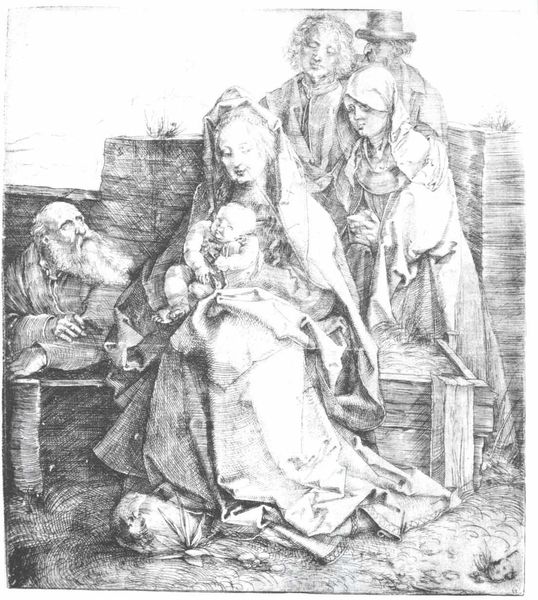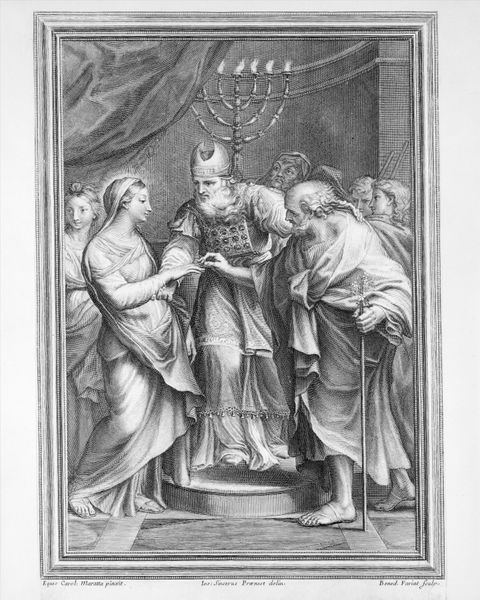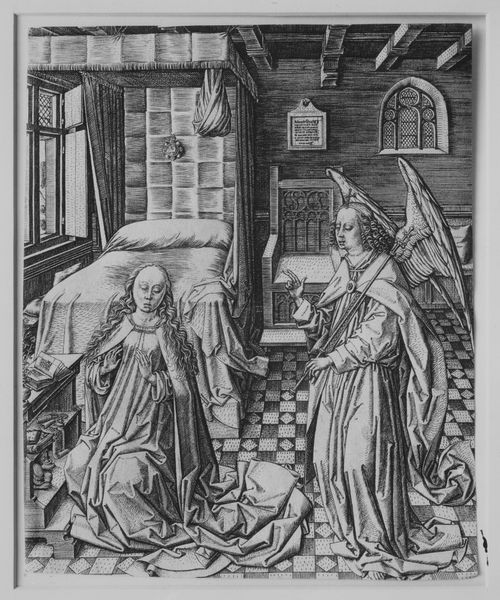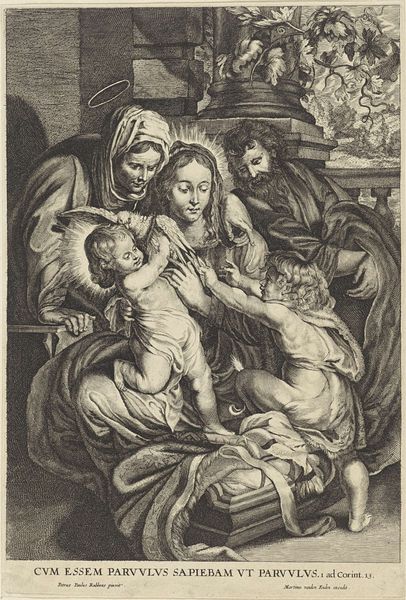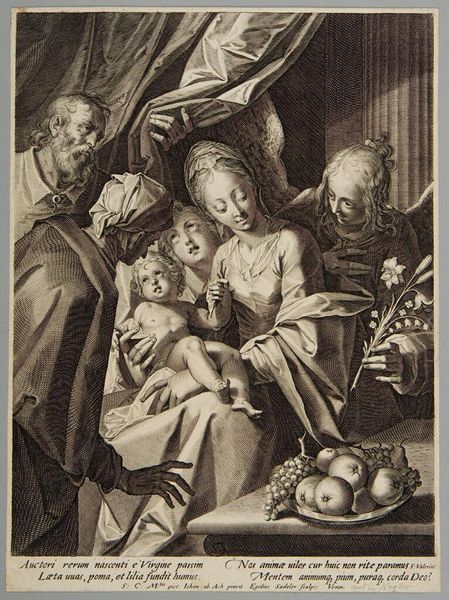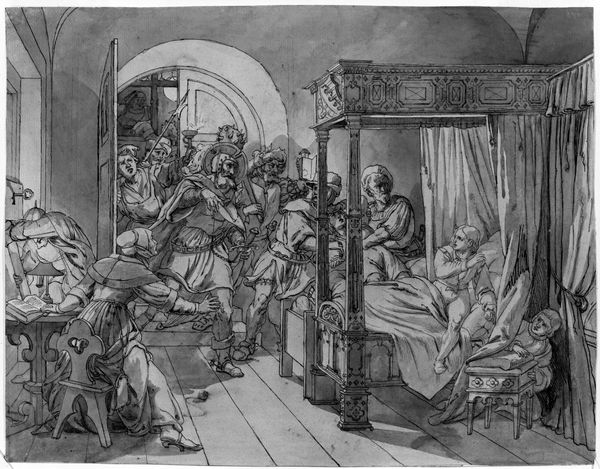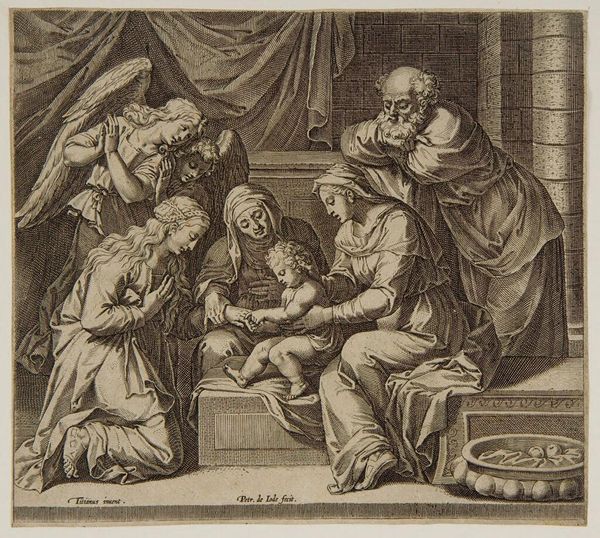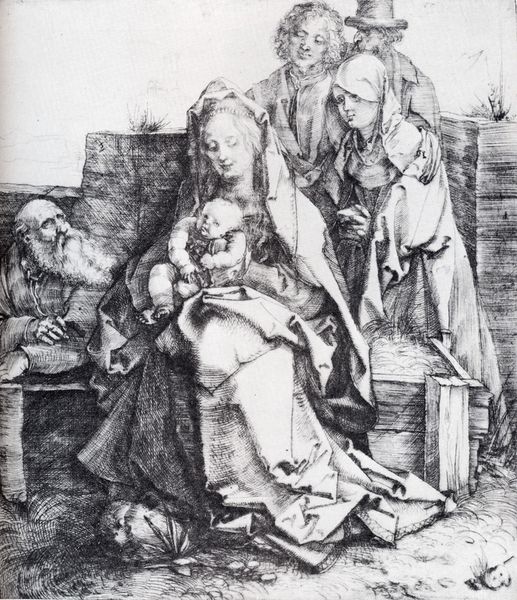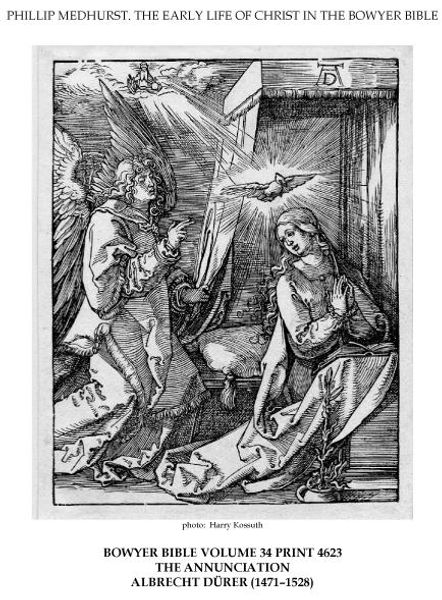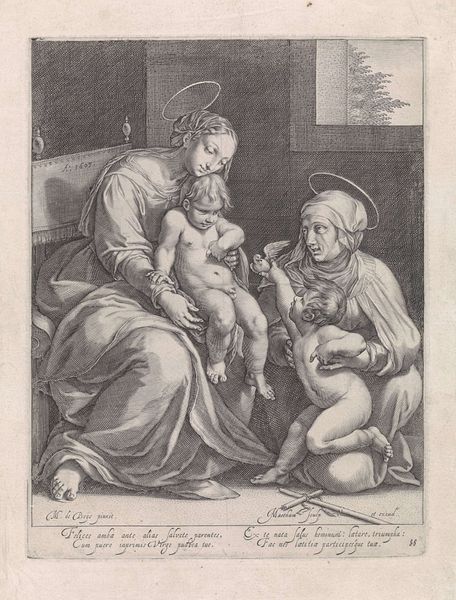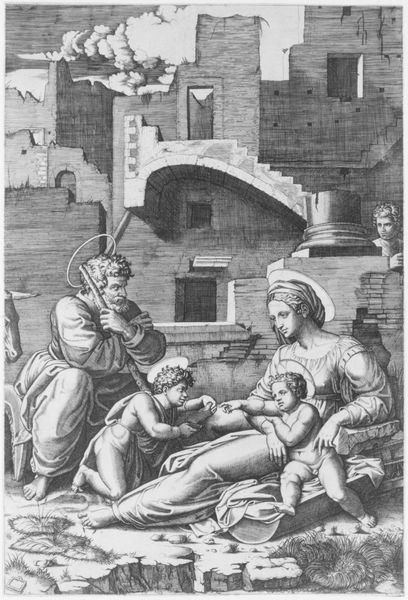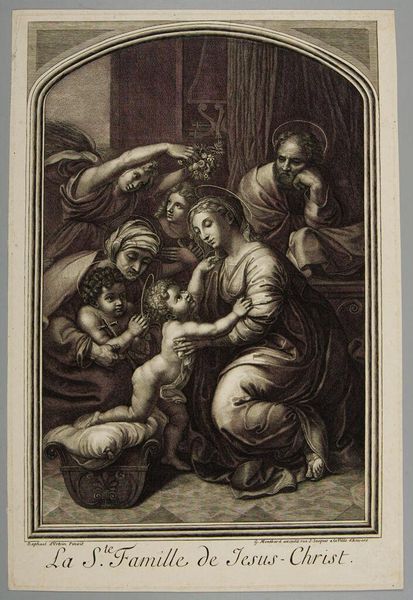
ceramic, porcelain, sculpture
#
medieval
#
ceramic
#
porcelain
#
figuration
#
sculpture
#
genre-painting
#
decorative-art
Dimensions: 3 11/16 × 2 11/16 in. (9.4 × 6.8 cm)
Copyright: Public Domain
Curator: Let's turn our attention to this porcelain Plaque created by the Meissen Manufactory between 1745 and 1765, a charming tableau from a bygone era, now residing here at the Met. Editor: My first impression is one of staged domesticity. Everything seems neatly arranged, almost like a theatrical scene. The stark monochrome lends a certain gravity, but it also flattens the forms. Curator: Indeed. This plaque captures the Holy Family—Mary, Joseph, and two infants who evoke a youthful John the Baptist and Christ. Notice the inclusion of what appears to be a domesticated cat, further grounding the sacred within the everyday. Editor: That domestic element strikes me as crucial. It's interesting how the decorative arts, in general, served to imbue the quotidian with symbolic weight. The textures here—the drapery, the stonework—are rendered with great detail despite the grayscale palette. I'm curious about that limited color scheme; it lends a sense of remove, doesn't it? Curator: The monochromatic effect serves, in a sense, as an act of reverence. Stripping away color reduces any perceived garishness. The deliberate choice creates an aura of the biblical, calling upon memories of earlier woodblock printed book illustrations and medieval tapestries, albeit through a very modern medium for its time, namely, decorative porcelain. Editor: It also affects how we perceive form, doesn’t it? We rely solely on shadow and line. Look at the way light catches the edges of the drapery, how it articulates the folds of Mary's garments. The semiotic economy feels distilled, somehow, sharpened, which gives this devotional scene heightened focus, in turn intensifying a viewer’s contemplation. Curator: It’s fascinating to consider how this plaque blends high and low, sacred and mundane, tradition and innovation. Porcelain itself was quite the innovation at the time. The Plaque gives us access to the emotional lives of figures that were, and are still, culturally embedded. Editor: It's almost as if the figures are suspended between worlds. The technical skill evident in the delicate modeling combined with the emotional restraint generates a curious tension, inviting viewers, like us, to tease apart what exactly those qualities convey. Curator: Reflecting on the Plaque, one considers the rich exchange between craft and art during this era, allowing the decorative to bear potent narratives. Editor: Absolutely. The Plaque, as we now appreciate, rewards our attentiveness to composition, its light and dark tonalities.
Comments
No comments
Be the first to comment and join the conversation on the ultimate creative platform.
